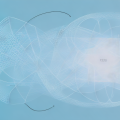The unit circle is a fundamental shape in mathematics that is used in trigonometry, calculus, and geometry. It is essential for understanding the relationship between angles and their corresponding circles. At the same time, it provides a visual representation of angles, which makes it a useful tool for solving more complex problems. This guide is designed to provide an in-depth look at the properties and uses of the unit circle.
What is the Unit Circle?
The unit circle is a circle with a radius of one (1). This makes it the smallest circle that can be drawn, and its center is located at coordinates (0, 0). Any circle with a differing radius could be considered a similar unit circle, with each point on the circumference scaled accordingly to maintain the same center coordinates.
The Definition of the Unit Circle
In geometry, the unit circle is defined as any circumference that has a radius of one. This definition also applies to related circles in trigonometry, calculus, or any other applications. The unit circle describes every possible angle and its related components, including sides and arcs. In other words, it is a representation of all angles between 0° and 360° inclusive, with each angle projected onto the unit circle.
Exploring the Properties of the Unit Circle
The unit circle has three main properties that make it an invaluable tool for solving more advanced problems. Firstly, its radius is always one (1), which makes it an ideal medium for analyzing fixed lengths such as arcs and sides of a triangle. Secondly, its center is always located at (0, 0), allowing for an easy reference point from which to measure angles. Furthermore, because its values are relative, many calculations can be performed without the need for lengthy algebraic equations.
Trigonometric Functions and the Unit Circle
The unit circle has become especially important in trigonometry. It provides the basis for a number of essential transformations such as sine, cosine, and tangent. These are functions which convert angles into lengths, making them solvable with relative ease. Additionally, any angle can be calculated with respect to the unit circle’s center coordinate and its mathematical functions.
How to Graph a Unit Circle
Graphs are an effective way of visualizing any unit. To draw a unit circle, start by drawing a line from its center dead-center to any point on its circumference. Label that point with its angle value from 0° to 360°, in addition to its side length (1). Next, draw your own radius from the center point at any other angle. That point can now be labeled using the mathematical functions of the unit. Continue adding points until you have completed the full circle.
The Relationship Between Radians and Degrees
In mathematics, degrees and radians are two distinct units of measurement used to describe angles. As such, they are directly related to one another. The key difference lies in their relative scale; while degrees are measured in a total number between 0° to 360°, radians are measured in a fraction of half-pi (π/2) or full-pi (π). Understanding this relationship allows us to easily convert one into the other, or vice-versa when solving problems.
Using the Unit Circle for Calculus Problems
The unit circle is key for solving more challenging calculus problems that involve the use of trigonometric functions even more complex equations. It can be used to calculate curves and arcs based on given angles or sides of a triangle. Additionally, it can be used to determine maximum or minimum values of certain functions. All of these calculations can be made much easier with the guidance of a visual representation such as the unit circle.
Calculating Arc Lengths with the Unit Circle
The unit circle is also useful for calculating arc lengths in trigonometry and calculus. By measuring two points along a circle’s circumference and taking their differences we can determine the length of an arc described by these two points. This is known as arc length, and it can be calculated with ease using the unit circle.
Solving Complex Geometry Problems with the Unit Circle
Complex geometry problems can often be solved using the unit circle. For example, if we have to calculate the area of a sector of a circle then we can use the unit circle’s properties to quickly find our answer. By measuring the angle of the sector and multiplying it by their total area (π) we can arrive at an accurate answer.
Taking Advantage of the Visual Representation of the Unit Circle
The unit circle’s visual representation also makes it an invaluable tool for solving problems that involve visualization or complex shapes such as triangles and polygons. By providing an easy way to visualize angles and curves, we can use the unit circle to quickly identify certain characteristics or changes in our shapes that would be otherwise impossible to observe.
Troubleshooting Common Issues with the Unit Circle
Finally, there are some common problems that may arise when working with the unit circle. These issues are often caused by miscommunication between angles or incorrect assumptions about radius lengths. If these issues arise, it is best to check our angles and radius lengths to ensure accuracy before making any major calculations.
Conclusion
The unit circle is a fundamental shape in mathematics which enables us to accurately solve trigonometry, geometry, and calculus problems quickly and easily. Its small size allows us to make quick calculations with minimal effort, while its visual representation allows us to solve more complex issues visually.
This guide has provided an in-depth look at the properties and uses of the unit circle so that we can get started applying this useful tool in our problem solving activities.





